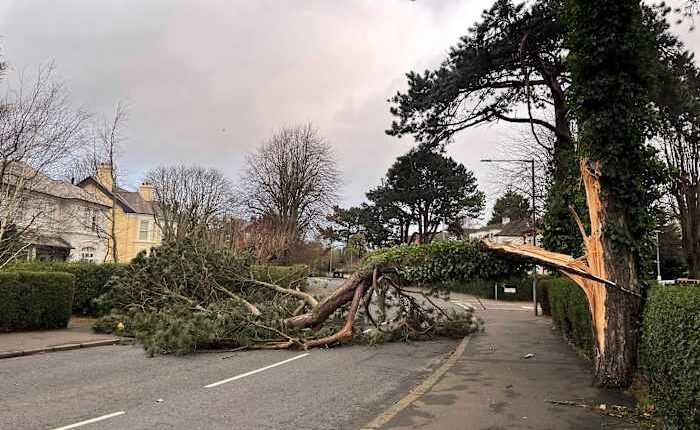
LONDON – Ireland experienced its strongest wind gusts on record, reaching 114 miles (183 kilometers) per hour, as a winter storm pummeled the country and northern parts of the U.K. on Friday, causing widespread power outages that affected hundreds of thousands of people.
Schools were shut down, train services were suspended, and numerous flights were grounded in the Republic of Ireland, Northern Ireland, and Scotland as the storm, named Storn Éowyn by meteorologists, unleashed its fury.
Weather forecasters issued a rare “red” weather alert, indicating a threat to life, covering the entire island of Ireland and central-southwest Scotland on Friday.
“Please just stay at home if you can,” Northern Ireland First Minister Michelle O’Neill said on BBC Radio Ulster. “We’re in the eye of the storm now. We are in the period of the red alert.”
The Scottish Parliament in Edinburgh shut its doors and Scottish First Minister John Swinney said: “We have to be clear. People should not travel.”
More than 700,000 homes and businesses in Ireland and almost 100,000 in Northern Ireland were without power due to “unprecedented, widespread and extensive” damage to electricity infrastructure, the Irish Electricity Supply Board said.
Ireland’s weather office, Met Eireann, said 114 mile an hour gusts were recorded at Mace Head on the west coast, beating a record of 113 miles (182 kilometers) an hour set in 1945.
Part of the storm’s energy originated with the system that brought historic snowfall along the Gulf Coast of the U.S., said Jason Nicholls, lead international forecaster at the private weather company AccuWeather.
The storm is being propelled by the jet stream and is being fed by energy in upper levels of the atmosphere. A rapid drop in air pressure is expected and could make Éowyn a bomb cyclone, which happens when a storm’s pressure drops 24 millibars in 24 hours.
Scientists say pinpointing the exact influence of climate change on a storm is challenging, but all storms are happening in an atmosphere that is warming abnormally fast due to human-released pollutants like carbon dioxide and methane.
Copyright 2025 The Associated Press. All rights reserved. This material may not be published, broadcast, rewritten or redistributed without permission.

















